The summer I was 6, my father and I trudged through stinking silt and razor-sharp reeds to explore a canal near our home in Suffolk, in southeast England. In a small clearing, what looked like dinosaur bones poked through the dark mud—giant black rib cages, evenly spaced down the waterway as far as the eye could see. “Son, these were 100 horse-drawn barges that a long time ago used to transport bricks,” I remember Dad telling me. “Suffolk legend has it that the owner sunk them all and shot all the horses when the railway came.” To me, this was shocking, epic, mind-expanding. Suddenly, my pastoral home in “Constable Country”—named for the British Romantic landscape painter—gained a dynamic fourth dimension. The edges of town, the fields, rivers, woods, and canals where I played were now filled with the ghosts of industrial revolution, technological innovation, and dark legends. I thought about the horses for months.
Many summers later and thousands of miles away, I’m up to my shins in Coney Island Creek, trying to photograph a Jurassic-looking barge that has evolved, Anak Krakatau–like, into an island complete with flora and fauna. I move around as quickly as possible, because water levels can rise dramatically in minutes. I leave the camera on the tripod with the shutter open, and shine a torch on the places I want to be illuminated—this is called “light painting” and with a little practice, you can make an abandoned barge look as though it’s been stage-lit.
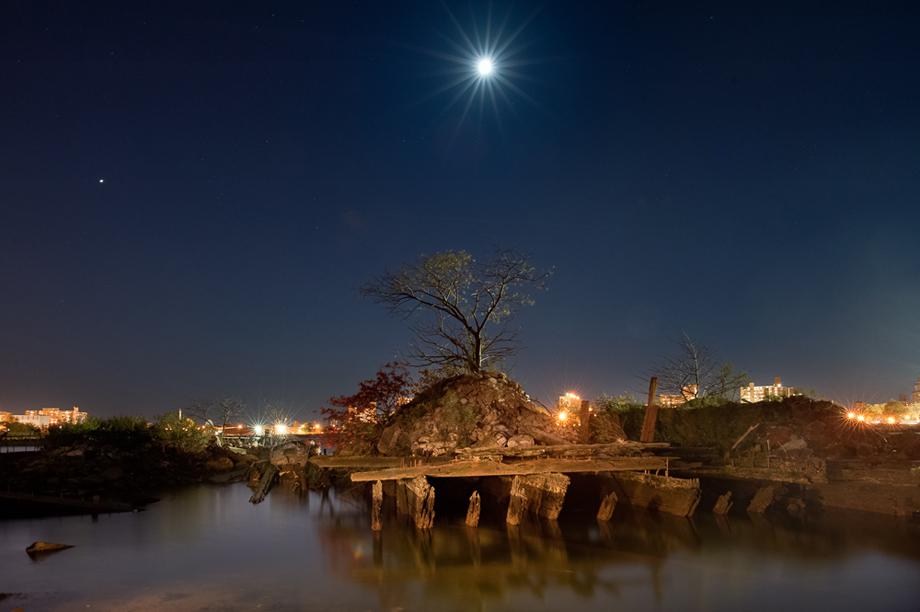
Adrian Kinloch
After I moved from London to Brooklyn, I was immediately drawn to the interzones where the city meets the wild: where wind, water, and time push man-made detritus to the edge of the city limits, or where once-viable industries have died and nature has crept back to colonize the rusting carcasses of production. So much of urban space is about human activity corralling and conquering nature, but you can glimpse the reverse in progress in so-called liminal spaces: transitional, threshold places where man has exploited nature and nature has returned to exploit what man has left behind—exploit it, but not purify it. In such a heavily populated and exhaustively documented city, photographic adventures to places like Dead Horse Bay, Gerritsen Beach, Marine Park, and Coney Island Creek offer the chance both for open-air solitude and for the thrill of discovery.
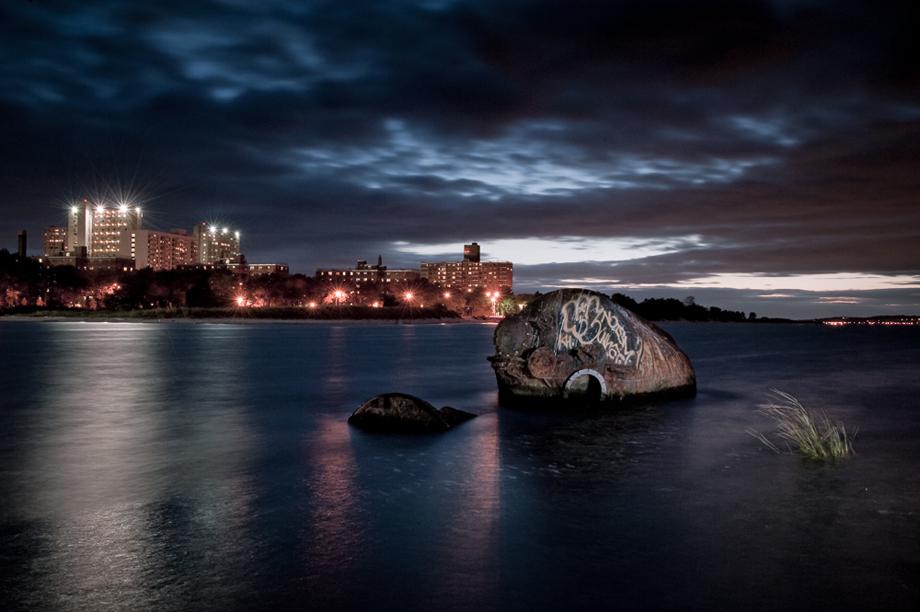
Adrian Kinloch
For the barges of Coney Island Creek, it was containerized shipping, not the railways, that spelled the end of their working life. In the 1960s their owners scuttled or burned the vessels, and they have been there ever since. Industry on the creek dates back as far as the 1660s, when Dirck De Wolfe opened his saltworks. The saltworks were burned to the ground, too, by furious locals after De Wolfe refused to let them pasture their cows nearby.

Adrian Kinloch
Mayor Michael Bloomberg wants to clean up Coney Island Creek and its environs, restoring them to their original pristine state. But when I ran into some guys from the Army Corps of Engineers, they said this task is nearly impossible—if you move any of those rotting barges, all the diesel and toxic chemicals encased in the silt will escape up to the surface.
Urban liminal zones are both beautiful and toxic. The geo-historic strata of a liminal space might include the metabolic processes of barges, saltworks, livestock, oil and coal and iron and trees and shopping malls. You might feel as though you’re in the past and the future at the same time—an early settler or a post-apocalyptic wanderer in a landscape out of Nathaniel Rich’s recent novel Odds Against Tomorrow, which is partly set in Brooklyn’s Flatlands. (Those who want a taste of the liminal experience without getting the smell of it in their nostrils and clothes should pick up Rich’s brilliant, unsettling book.)

Adrian Kinloch
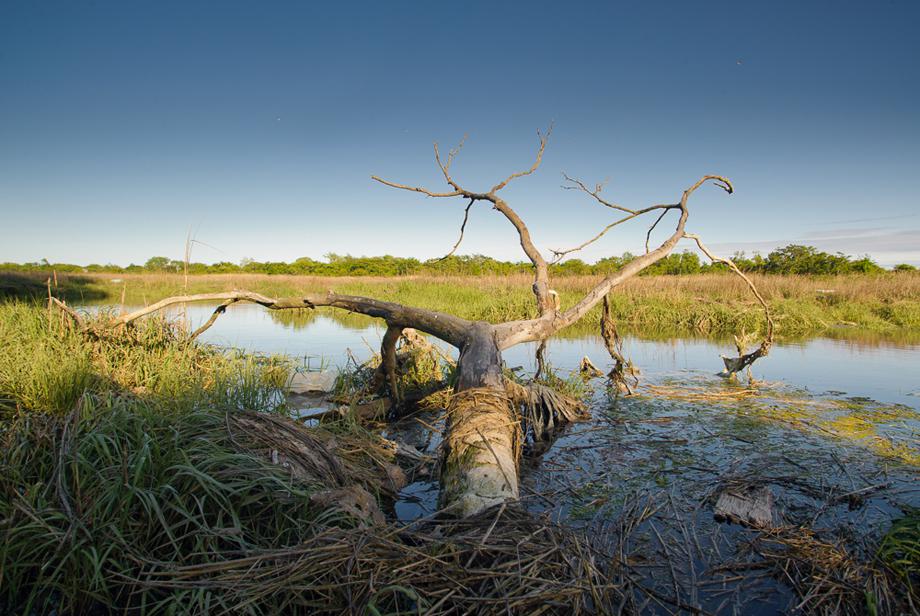
Adrian Kinloch
No other liminal zone has as grisly a provenance as Dead Horse Bay, but most of them carry a sense of death, decay, and desertion. Near Gerritsen Beach is Marine Park, which contains a beautiful salt marsh featuring a sculpture park of abandoned vehicles. Some have almost completely dissolved into the creek; others have arrived more recently.
Sometimes these cars have been left near domestic setups evocative of Cormac McCarthy’s The Road, typically consisting of chairs arranged around an extinguished fire, with primitive found-object sculptures placed carefully on the periphery. It was near one of these I saw a naked man pulling fish out of the creek with his bare hands.

Liminal Walks: Flatbush Avenue and Belt Parkway
Adrian Kinloch
Sometimes these zones inspire people to create personal, intimate memorials to lost loved ones. Bodies are hidden in, and occasionally pulled from, these city nether-regions. Perhaps it’s the solitude and somberness of these places that makes them attractive as shrines, as well as the feeling that you’re standing on a threshold between life and death, past, present, and future.
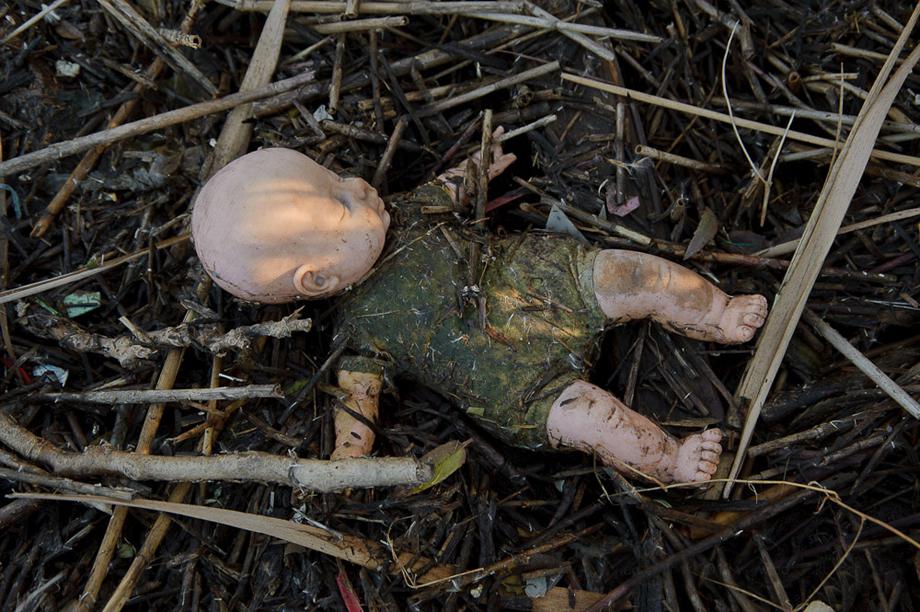
Adrian Kinloch

Adrian Kinloch
This creature’s domain is Dead Horse Bay, a name derived from the thousands of horse carcasses dumped here some 70 years ago. The area was home to horse-rendering plants that employed Polish, Irish, and Italian immigrants, who lived on neighboring and equally putrid Barren Island. Tides and eroding waves conspire to tell the tale of this industry even today, as horse bones still wash up or are pulled from the banks, along with children’s toys, crockery, bottles, and shoes.
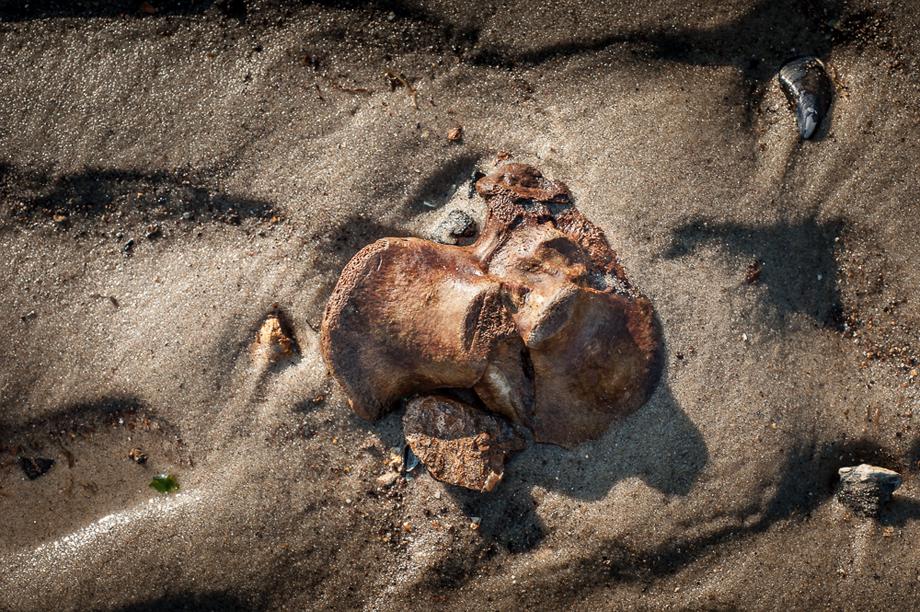
Adrian Kinloch

Adrian Kinloch
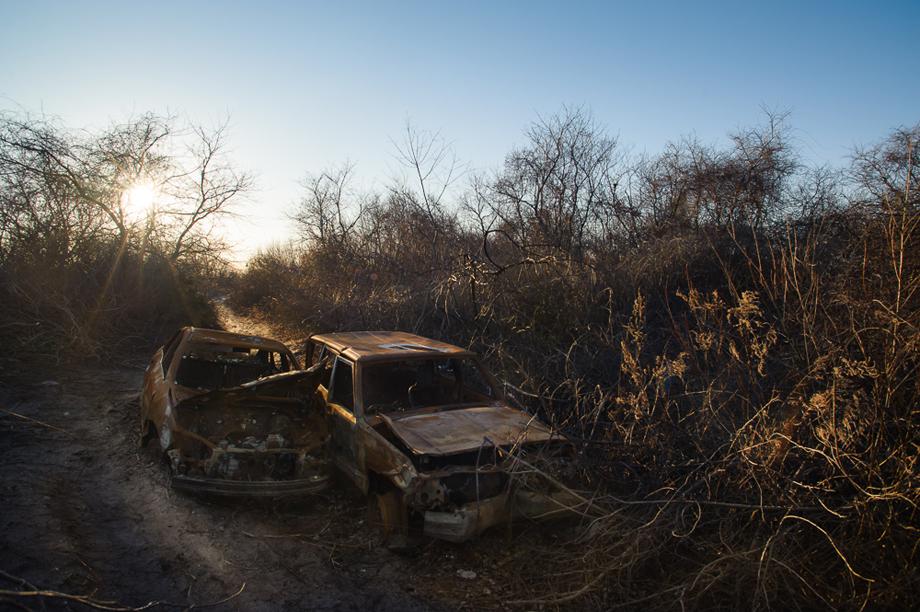
Adrian Kinloch
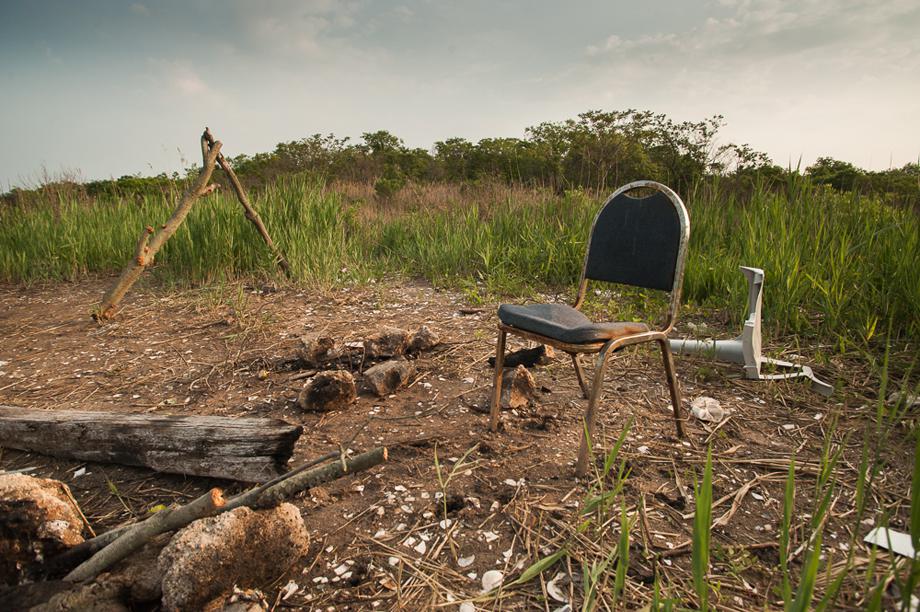
Adrian Kinloch
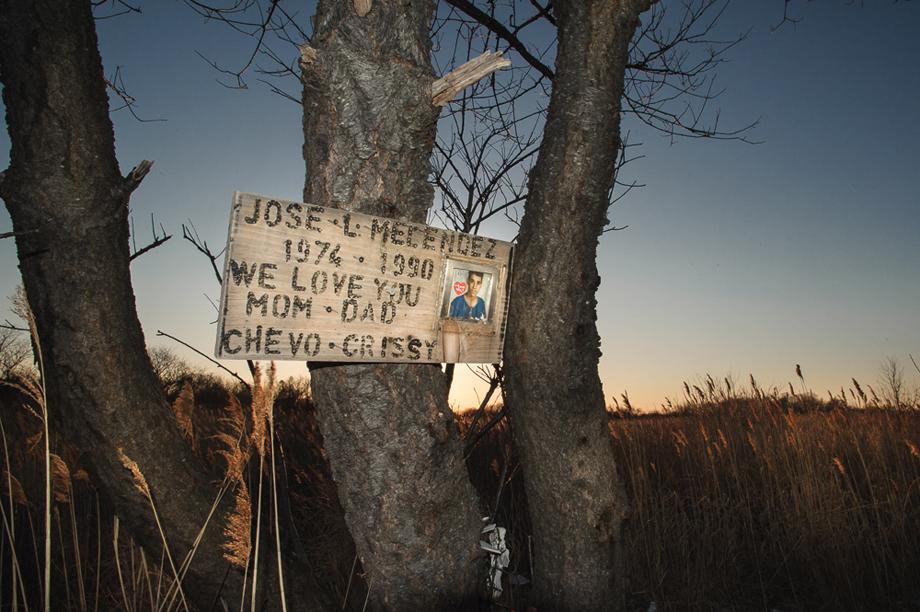
Adrian Kinloch
The most unsettling scenes in the liminal underworld are where offerings and rituals seem to have taken place—or perhaps objects are posted as warnings. These spots remind me of the gruesome forest discoveries of my childhood in Suffolk, like the time I was walking through the woods and came across several crows that had been nailed to trees. According to my parents, the crows were the cranky gamekeeper’s way of admonishing poachers to keep out. I don’t dare imagine what a village of teddy bears impaled on poles might mean.
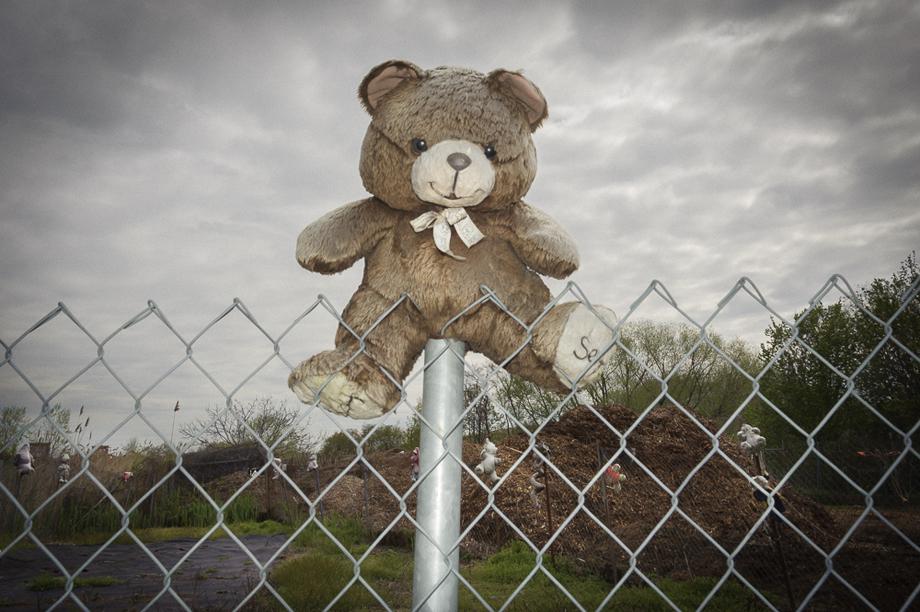
Adrian Kinloch
Other vales and copses put me in mind of The Blair Witch Project.
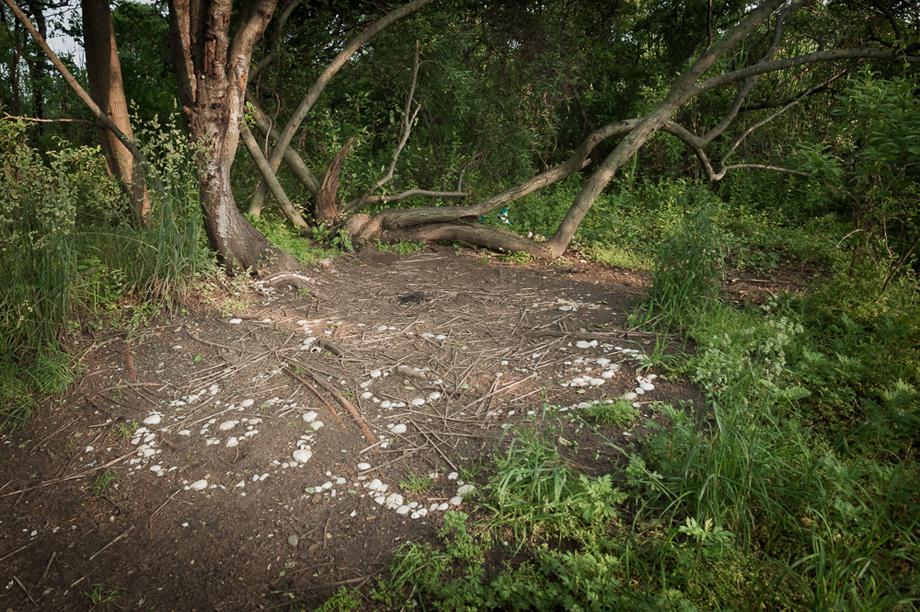
Adrian Kinloch
These zones produce some of the most indelible pictures—in my mind, at least. These locations can conjure a sense of vulnerability and even primal fear, but I try to channel it through the detachment of the viewfinder. I dread the moment I’m downloading the day’s shots and I notice a figure in the trees. There are dark druid groves just off the Belt Parkway.
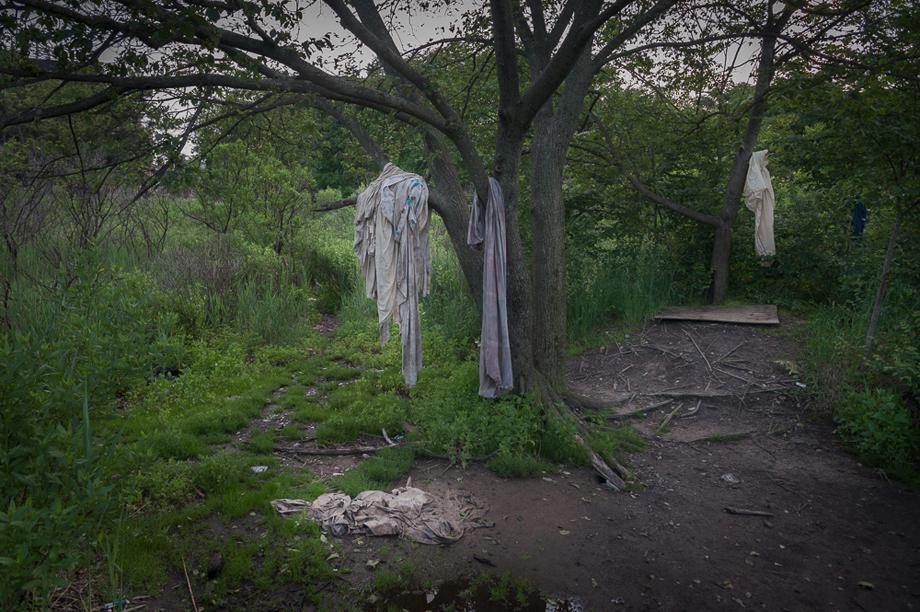
Adrian Kinloch
More from Slate’s series on the future of exploration: Is the ocean the real final frontier, or is manned sea exploration dead? Why are the best meteorites found in Antarctica? Can humans reproduce on interstellar journeys? Why are we still looking for Atlantis? Why do we celebrate the discovery of new species but keep destroying their homes? Who will win the race to claim the melting Arctic—conservationists or profiteers? Why don’t travelers ditch Yelp and Google in favor of wandering? What can exploring Google’s Ngram Viewer teach us about history? How did a 1961 conference jump-start the serious search for extraterrestrial life?
